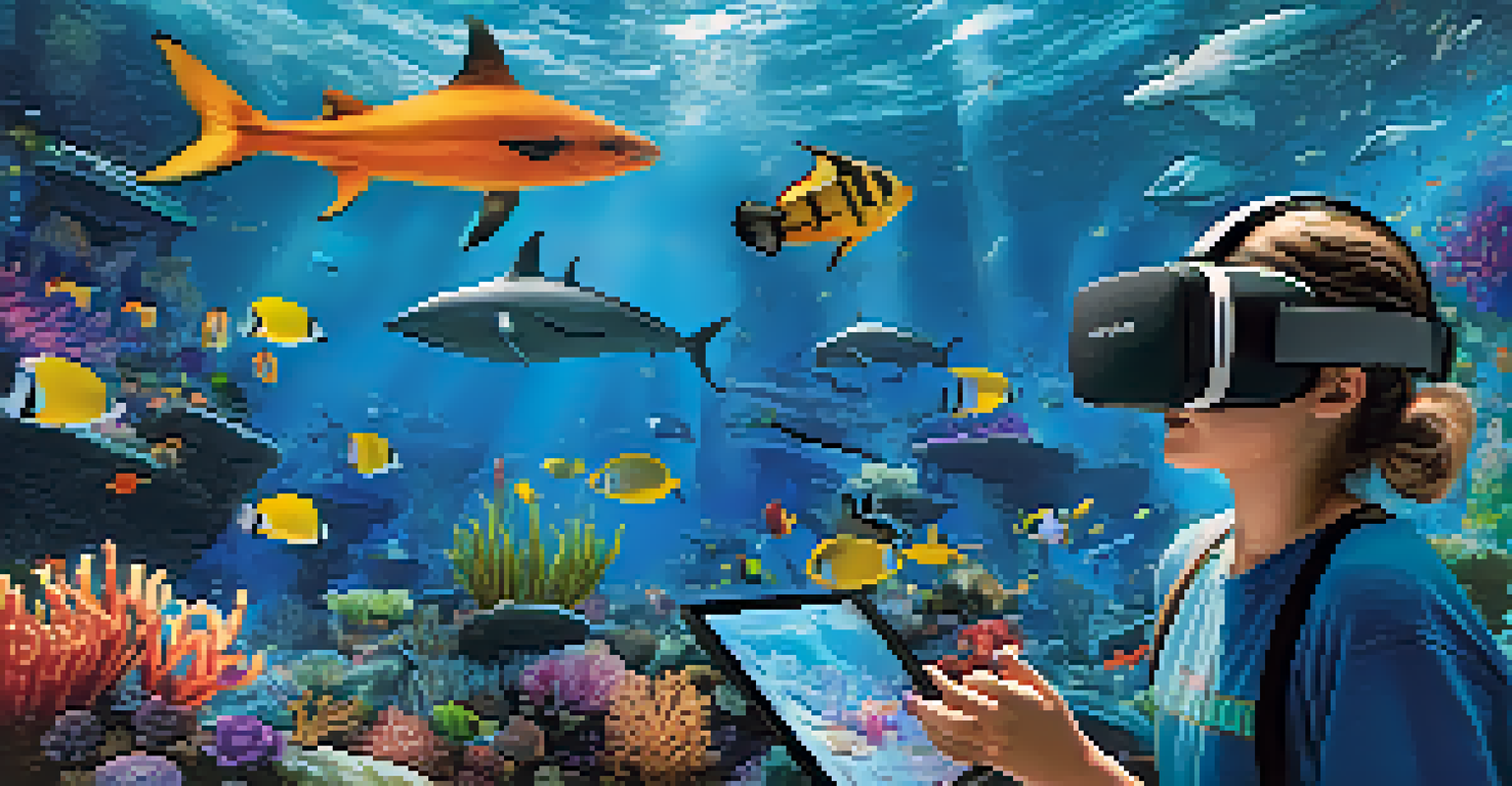The Influence of Educational Technology on Learning Spaces

Understanding Educational Technology and Its Role
Educational technology encompasses any digital tools that enhance learning. This includes everything from interactive whiteboards to online learning platforms. By integrating these tools into classrooms, educators can create more dynamic and engaging lessons that cater to diverse learning styles.
Technology will not replace teachers, but teachers who use technology will probably replace those who don't.
The role of educational technology is not just about replacing traditional methods; it's about augmenting them. For example, using apps that encourage collaboration can make group projects more effective and enjoyable. This transformation helps to foster a more inclusive classroom environment where every student can thrive.
Ultimately, understanding the capabilities of educational technology is crucial for educators. By leveraging these tools effectively, teachers can enhance their teaching strategies and empower students to take charge of their learning journey.
Redefining Classroom Layout with Technology
The traditional classroom layout is evolving thanks to educational technology. Desks are no longer arranged in rows but are often grouped together to facilitate collaboration. This shift reflects a growing emphasis on student engagement and interaction, making learning more dynamic and enjoyable.

With the introduction of technology like smart boards and tablets, classrooms can now be more versatile. For instance, a single space can transform from a lecture hall to a collaborative workspace in minutes. This flexibility encourages students to work together and think critically, skills that are essential in today’s world.
Tech Enhances Classroom Engagement
Educational technology fosters dynamic learning environments that cater to diverse student needs.
As we redefine classroom layouts, it’s important to consider how these changes impact student learning. A well-designed learning space can motivate students and promote a sense of community, ultimately enhancing their educational experience.
The Role of Virtual Reality in Learning Spaces
Virtual reality (VR) is making waves in educational technology, offering immersive experiences that traditional classrooms simply can't provide. Imagine students exploring the depths of the ocean or walking through ancient civilizations without leaving their seats. This kind of engagement can truly transform how students absorb information.
The future of education is not about technology itself, but about how technology can be used to enhance the learning experience.
With VR, lessons become interactive adventures, encouraging exploration and curiosity. For example, medical students can practice surgeries in a risk-free environment, honing their skills before entering real-life situations. This hands-on learning approach can significantly enhance understanding and retention of complex concepts.
However, integrating VR into learning spaces does come with challenges, such as cost and accessibility. Educators need to weigh these factors against the potential benefits, ensuring that all students can access these innovative learning tools.
Blended Learning: A New Approach to Education
Blended learning combines traditional face-to-face instruction with online learning components, creating a flexible learning environment. This approach allows students to learn at their own pace while still benefiting from direct interactions with teachers. It’s a model that accommodates diverse learning preferences and schedules.
For instance, students can watch instructional videos at home and come to class prepared for deeper discussions. This not only fosters accountability but also encourages a more active learning process. Educators can focus on facilitating discussions and providing personalized support during class time.
Collaboration Boosted by Technology
Tools like Google Classroom facilitate teamwork, preparing students for modern workplace dynamics.
The rise of blended learning highlights the importance of adaptability in education. As technology continues to evolve, so too must our approaches to teaching, ensuring that we meet the needs of all learners.
Enhancing Collaboration Through Educational Technology
Collaboration is a key component of successful learning, and educational technology is making it easier than ever. Tools like Google Classroom and Microsoft Teams allow students to work together on projects, regardless of their physical location. This fosters a sense of teamwork and community, vital for developing social skills.
When students collaborate using technology, they engage in meaningful discussions and problem-solving. For example, video conferencing tools enable group work even when students are at home, ensuring that learning continues. This adaptability is particularly beneficial in today’s world, where remote learning is becoming more common.
Ultimately, enhancing collaboration through educational technology prepares students for the realities of the modern workplace. By learning to communicate and collaborate effectively, students are better equipped to succeed in their future careers.
The Importance of Teacher Training in Tech Integration
As educational technology continues to advance, it’s crucial that teachers receive proper training to integrate these tools effectively. Professional development programs can help educators understand how to use technology to enhance their teaching. This ongoing support is vital to successful tech integration in the classroom.
Without adequate training, even the best technology can fall flat. Teachers may struggle to implement new tools, leading to frustration for both themselves and their students. Therefore, investing in teacher training is not just beneficial; it's essential for maximizing the potential of educational technology.
Teacher Training is Essential
Effective integration of technology in education relies on proper training and support for teachers.
Moreover, when teachers feel confident in using technology, they can inspire their students to embrace these tools as well. This creates a culture of innovation and exploration, where both educators and learners are excited about the possibilities that technology brings.
The Future of Learning Spaces in a Tech-Driven World
Looking ahead, the future of learning spaces is undoubtedly intertwined with educational technology. As innovations continue to emerge, we can expect even more dynamic and flexible environments that cater to the needs of diverse learners. This evolution will redefine the way we think about education and the role of the classroom.
For instance, adaptive learning technologies could personalize education further, allowing students to learn at their own pace and style. Imagine classrooms that can adjust in real-time based on student engagement and comprehension levels. Such advancements would create a truly responsive learning environment.

Ultimately, the future of learning spaces is bright, filled with opportunities for enhanced engagement and collaboration. By embracing educational technology, we can create an inclusive and effective learning environment that prepares students for the challenges of tomorrow.